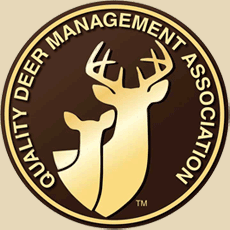As late May and early June roll around in the Carolinas and Georgia. Fawning activity hits its peak. With the first week of June typically the apex of fawning in these three states. We do see in the far southern portions of Georgia this extends as far as the beginning of July. But for the most part, from around May 25 – June 15 the fawning is going strong.
Land owners and managers have seen over the past fifteen years that placing an emphasis on fawn survival has helped their herds increase. This is done through a variety of methods. Creating good fawning cover is one good method that is relatively easy to do and rather inexpensive.
Deer know instinctively that their fawns need cover from predators to survive the first several weeks of life. Providing good thick cover will help them find places to fawn. Young pine plantations provide excellent cover for several years, and we see an increase in fawn survival when there is good young plantations. However, as these trees get older the cover disappears and the fawn survival also diminishes to some degree. As a land owner, there are things we can do to enhance good fawning cover.
When replanting after a harvest of timber, we can leave some areas unplanted and allowed to regenerate naturally. Or in these areas, we can planting species that will create cover, such as blackberries, honeysuckle, multiflora, or other berries creates almost impenetrable obstacles to predators. Other things we can do such as leaving trees that fall naturally, or cutting down trees, hinge cutting trees and allowing the tops of the trees to remain. All create excellent cover for fawns.
But perhaps the best method to protect our deer herd is by controling the predators. Aggressive predator control is the number one method of protecting our fawns. Twenty years ago this was unheard of, because humans and the occasional wild feral dog was the only predator deer had. Since the coyote has taken hold in the Southeastern states we have a new problem. Controlling the spread of coyotes is critical to controlling our deer herds and protecting our fawns. While a lot of coyotes are shot incidental to deer hunting far too many are allowed to live. Many deer hunters are hesitant to kill a coyote out of fear it will “mess up their hunt” when the truth is, allowing that coyote to live will definitely ruin tier hunting for years to come. Charles Ruth the head of the South Carolina Deer and Turkey project puts it like this. “Every dead coyote is one more you don’t have to worry about.” He goes on to say; “if hunters would shoot every coyote they see, it would help. But there is no denying that the most effective method of controlling coyotes is through trapping.”
Ruth is conducting and extensive multi-year study on the effects of coyotes on deer depredation. And while the results are not complete, these studies are showing that of the fawn mortality that occurs, roughly 80% can be directly attributed to coyotes. Where twenty years ago, one doe successfully raised 1.5 fawns per year to adulthood, we are now seeing that it is taking roughly 2 doe to get 1 fawn to maturity. And this is directly attributed to the coyote.
We will cover trapping coyotes in detail in a subsequent article. But suffice it to say that if we are to control our deer herd population we as land managers and land owners need to control the animals that prey on them.
Coyotes will have between 3 and 6 pups each year; compared to the 1.5 fawns per doe. Coyotes typically have their litters in late April through mid May. Just in time for the fawning. Adult coyotes are hunting aggressively to feed their growing family. Both parents participate in hunting and caring for the pups. Nature allows this to coincide with the fawning and abundant food supply. While it’s good for the coyotes, its reaping havoc on our deer herds.
By creating good thick cover for does to fawn, and controlling the predator population we are ensuring a successful regeneration of our deer herd on our land. And as land owners, or land managers who hunt deer in the Carolinas and Georgia, it all begins with protecting the fawns that will grow into adults.




